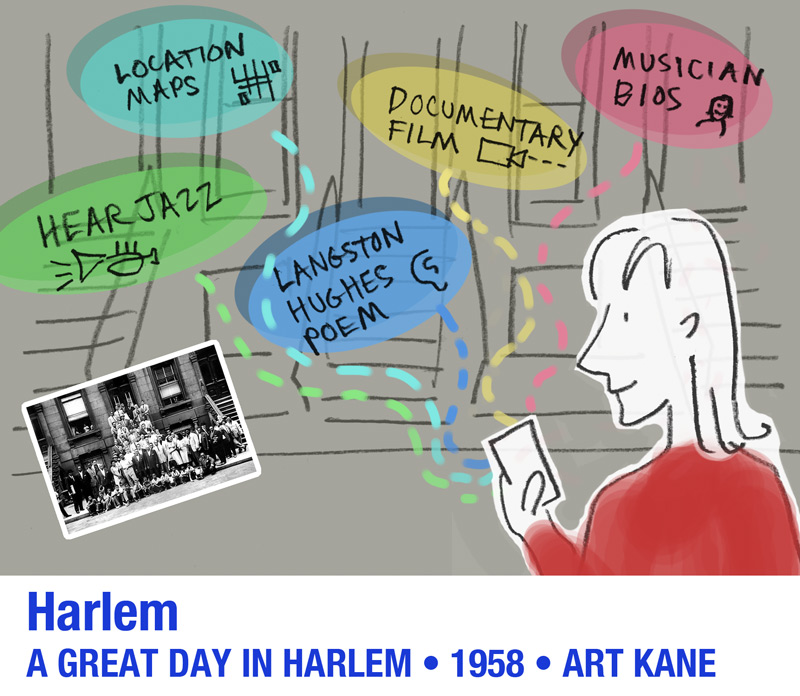Imagine, for example, you come across the site of “A Great Day in Harlem,” the 1958 photo by Art Kane. There, using your mobile, you discover the documents and media that have been curated around this location and event—-jazz recordings, interviews, videos. You can also contribute your own writings, video, and artwork real-time via your mobile.
OpenPath affords the learner an unbundled, interest-driven, location-based experience. OpenPath offers a learning-in-the-world, where mobile acts as glue holding the experience together, and offers real-time media and collaboration. The mobile acts also as an on ramp to communities of interest, other learners who would like to pursue other learning paths created by this first experience. Shirky’s notion of unbundling, then, means that the OpenPath learner uses a tool that navigates the unbundled educational world, allowing geo-locative connections, communities, collaboration and creation. And perhaps this unbundling liberates the learner to reacquaint him/herself with inquiry.
OpenPath Tumblr
OpenPath Mozilla Ignite

